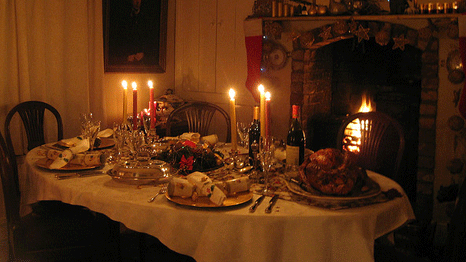Feed The World, And Have A Sustainable Christmas Lunch
By Sophie Yeo
05 December 2013
RTCC

Source: Flickr/cocoleroc
Christmas is coming and the goose is getting fat. But not fat enough. By 2050, the world will need 70% more food in order to feed a projected population of 9.6 billion.
Closing this food gap will become one of the great challenges of the coming decades, particularly as a changing climate shrinks the volume of crops produced in some parts of the world.
But the solutions are there: a new UN-backed report from the World Resources Institute lists actions the world can take to make sure the amount of food produced between now and 2050 increases over the next 35 years.
Simple steps include cutting the 1.3 billion tonnes of food waste thrown away each year by half, reducing meat consumption and – perhaps controversially – reduce birthrates in sub-Saharan Africa .
“The solutions on our menu would allow the world to sustainably increase food production and reduce excess consumption,” says the WRI's Andrew Steer, adding: “We cannot afford to wait”
We've taken the key messages from the UN and WRI and applied them to one of the most important meals of the season: Christmas dinner.
1 Cross your overweight uncle off the guest list
In a world where food is scarce, there is no room for obesity. In 2008, there were 1.4billion overweight people in the world, with 5 million of these categorised as obese. Your uncle may think that a bit of extra fat makes him that much more loveable, but reducing the amount of excess consumption could reduce the 2050 food gap by 6%.
2 Don't be greedy
It may be Christmas, but that's no reason to get overexcited with your portions. Across the world, a quarter of food is wasted between farm and fork. Cutting this in half would reduce the food gap by roughly 20%. In industrialized countries, where consumers are responsible for half of the losses, this means sticking with pigs-in-blankets rather than whole pigs. In developing countries, where two-thirds is lost during harvest, handling and storage, the burden falls on farmers to be a bit more careful.
3 Swap the turkey for a nut roast
Give one more turkey a chance to spend this Christmas in a field rather than an oven this Christmas. The turkey will thank you, and so will future generations. Meat eating is one of the least efficient methods of nutrition. With an 82% increase in meat consumption projected between 2006 and 2050, eating fewer birds over this Christmas season will help to reduce land demands and greenhouse gas emissions.
4 Listen the Band Aid
The 1984 release of Bob Geldof's ‘Do They Know it's Christmas?' raised record funds for famine relief in Africa . This is a problem that is only projected to get worse over the coming years. Hunger will be particularly acute in sub-Saharan Africa , where population is projected to nearly triple from its 2006 level by 2050, requiring crop production to increase by 3.6%.
This is from a region that exports 40% of its agricultural produce to Europe . While Band Aid has since been replaced by a trend for cheerier tunes, it is still a pointed reminder that unsustainable eating habits have ramifications around the globe.
5 Eat smarter sprouts
How your vegetables are grown has a big impact on the carbon footprint of your dinner. Smart farm management means that the same amount of land can yield more crops. This might include choosing seed varieties which are adapted to local conditions, checking the weather forecast to ensure crops are planted at the optimum moment, and a more savvy use of fertiliser.
Comments are moderated
